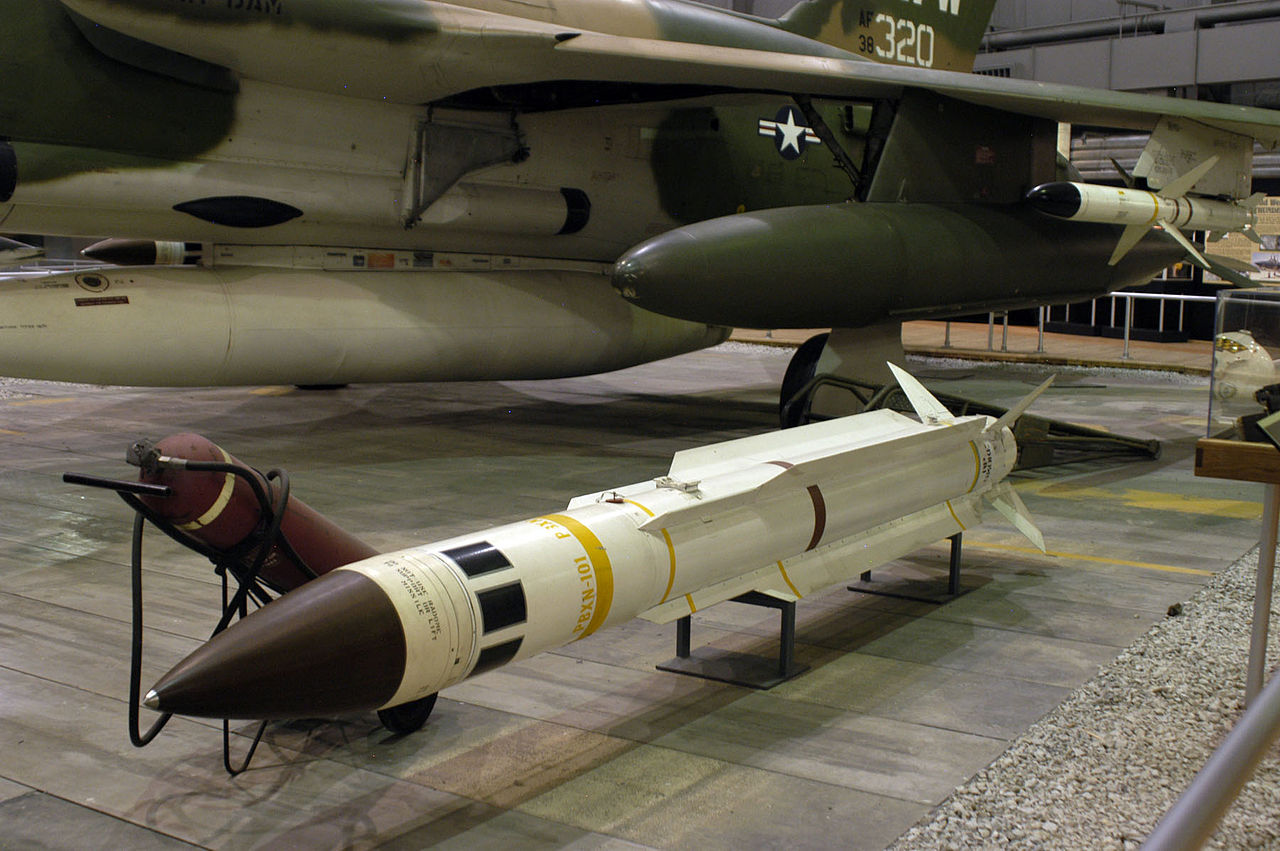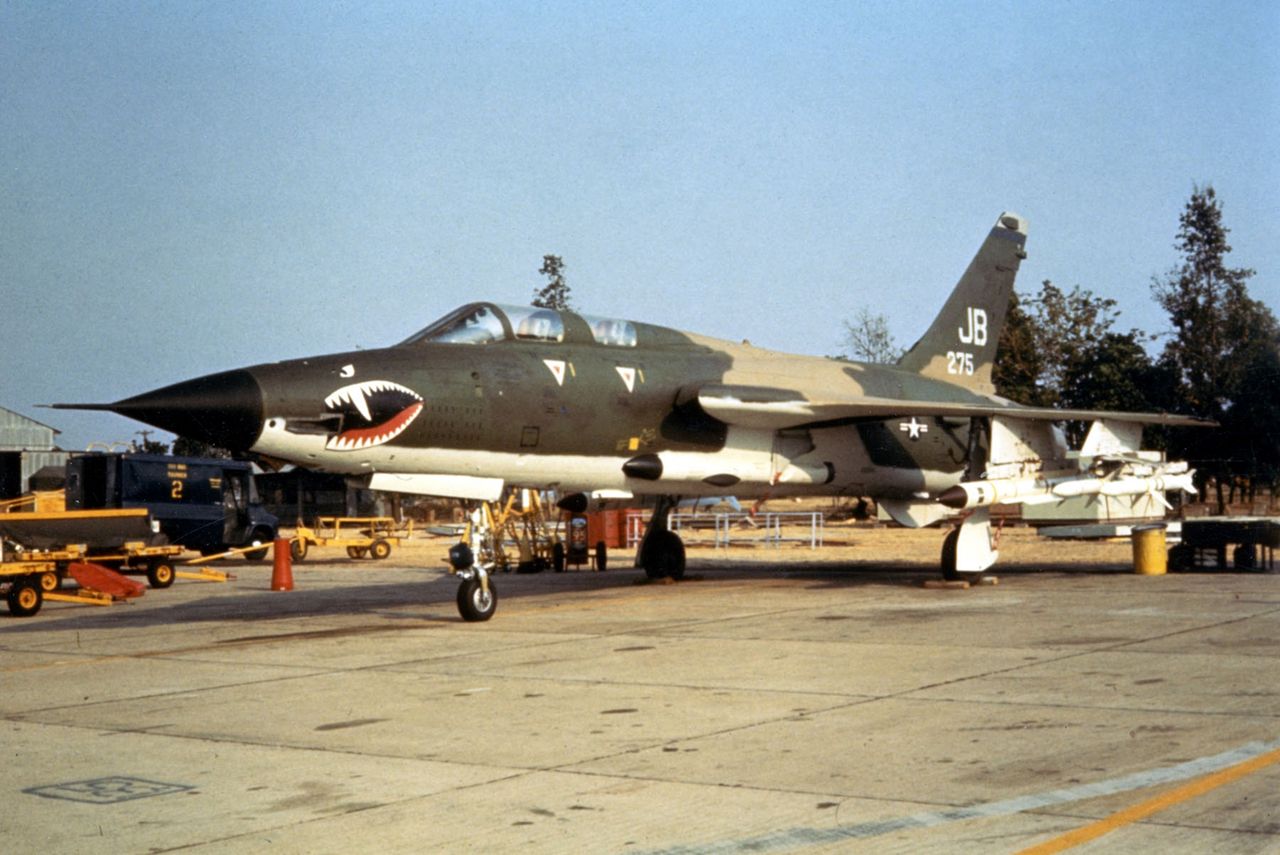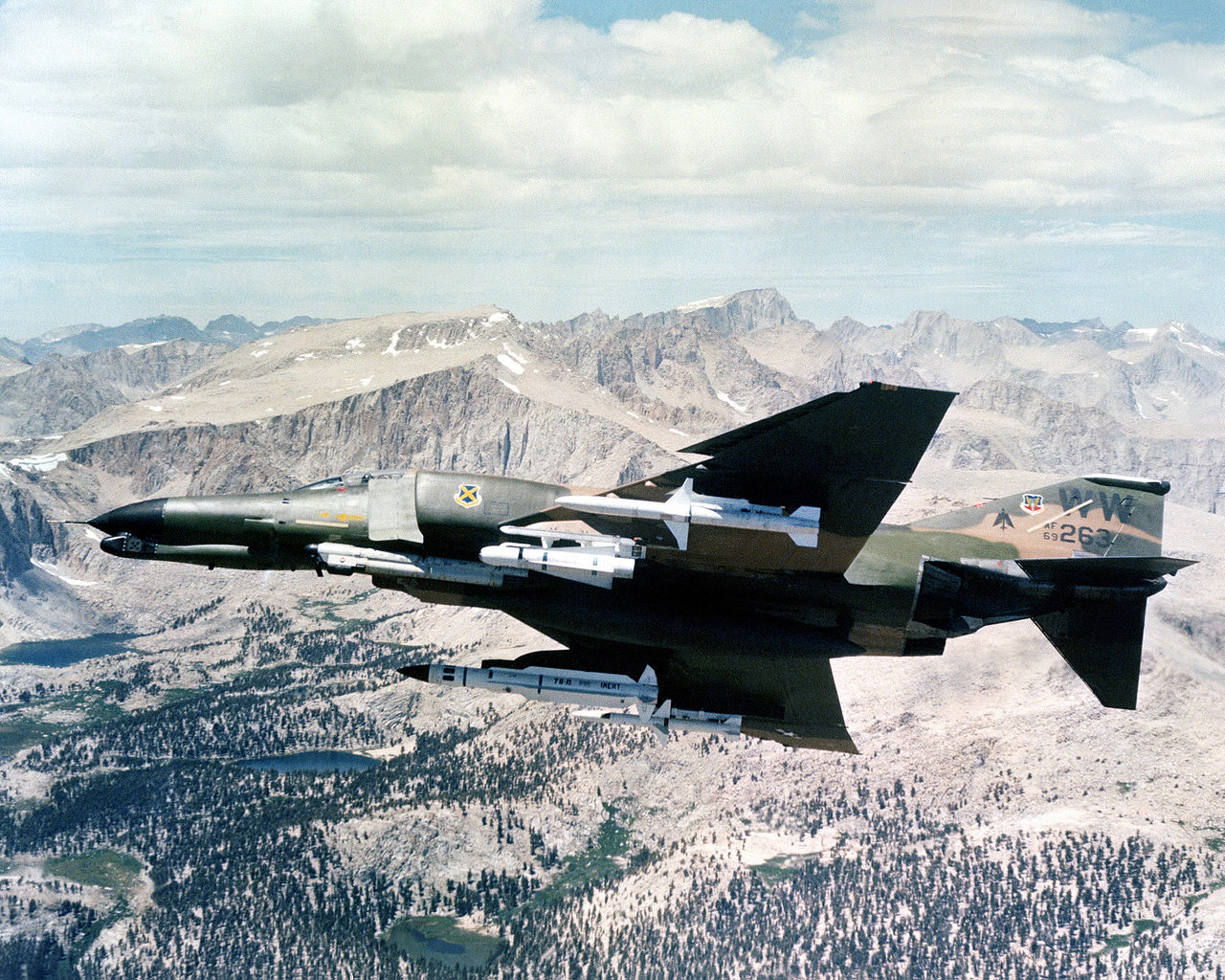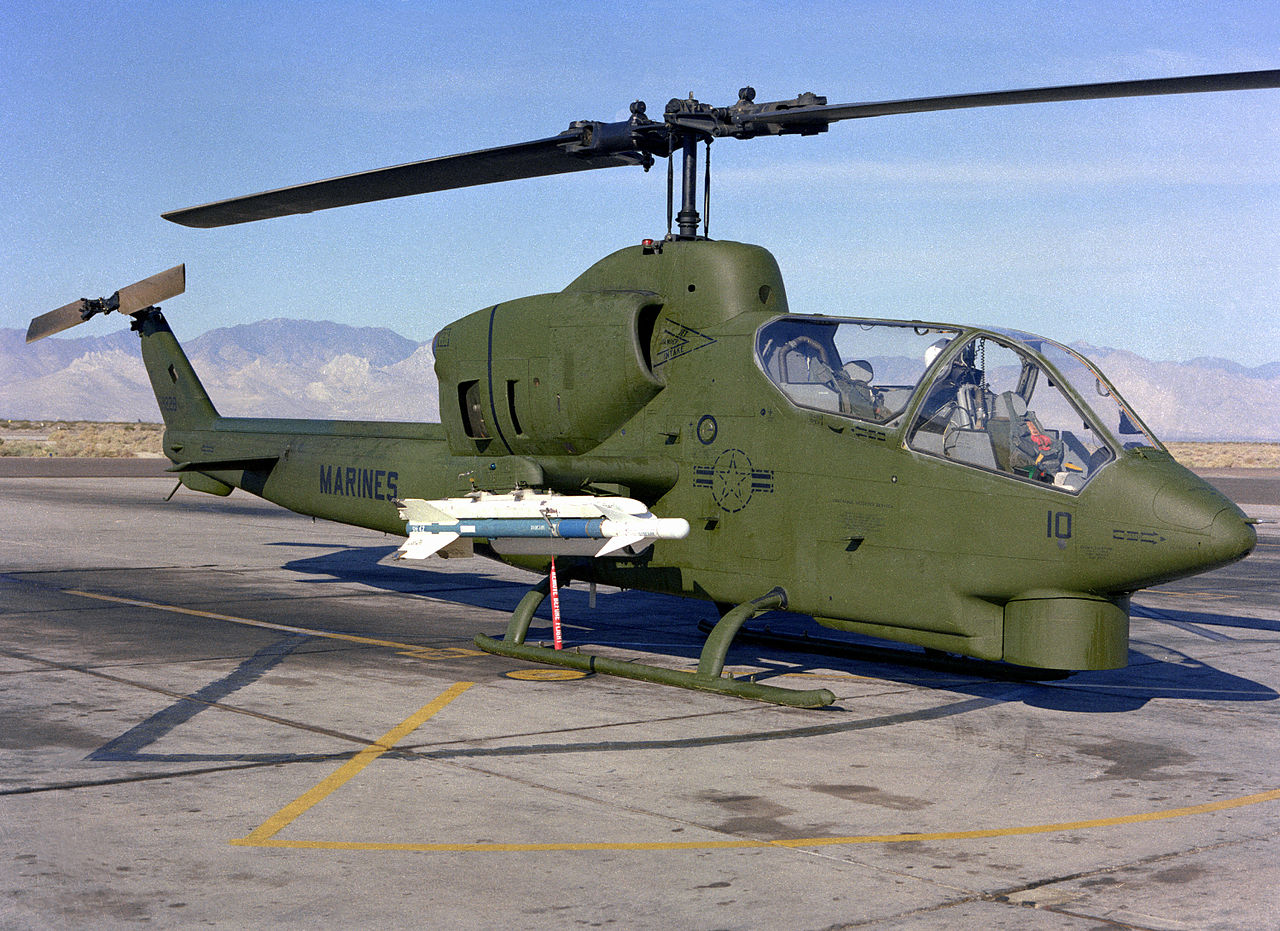In the early 60s, the US military faced a serious problem. Much of its firepower was tied up in manned strike aircraft, but these aircraft were increasingly vulnerable to surface-to-air missiles like the Soviet SA-2 Guideline. Any effective air campaign would require the destruction of the SAM sites, but existing methods of attacking SAM sites, such as iron bombs and short-range missiles, were extremely dangerous. Fortunately, China Lake, the Navy's main center for developing aerial weapons, had the idea for a missile that would home in on the SAM's own radar emissions. This neatly solved several problems. The attacking aircraft could launch from greater range, and without having to get the precise position of the target. Simply lob the missile towards the SAM site, and it would find and attack the radar on its own.

AGM-45 Shrike
The first weapon of this new type, dubbed anti-radiation missiles, was the AGM-45 Shrike. It was based on the airframe of the AIM-7 Sparrow air-to-air missile, but with a new seeker designed to track the Fan Song radar of the SA-2 and a different warhead and rocket motor. This weapon was in use over Vietnam almost as soon as it entered service, and proved a significant improvement over previous methods of shutting down SA-2 sites, although it had a number of drawbacks.

Fan Song radar
First, it didn't have the range to attack from outside the SA-2's envelope, which made using it a rather perilous task. Second, it was fairly slow, and launching one in reaction to an incoming SAM produced posthumous revenge at best. Third, the seeker had a narrow field of view, and had to be launched on an almost perfect trajectory to pick up the Fan Song's signal. Fourth, the seeker was hard-wired for a particular band of radar signals, so each type of radar needed a new seeker. This meant that the strike planners had to guess at the types of radars the package would encounter, and guessing wrong could leave the Suppression of Enemy Air Defense (SEAD) aircraft without their most potent weapon. Fifth, the warhead was fairly small, and had an annoying tendency to just tear up the radar antenna, damage that was easily repaired. Lastly, Shrike's primitive guidance system had no memory, and could be defeated by simply shutting down the radar. This wasn't entirely a bad thing, as it also neutralized the SAM site, but the radar would be back on the air within a minute or two, leaving the Wild Weasels to repeat the process.

AGM-78 Standard ARM
Growing losses over Vietnam led the Navy to request an improved ARM, and one was developed in only a year using the ship-launched RIM-66 Standard SAM as a basis. The first version of the AGM-78 Standard ARM was essentially just an RIM-66 with a Shrike seeker bolted on and a few modifications for aircraft carriage and launch, although the seeker was gimballed for a better field of view. The Standard motor did give it twice the range of Shrike, and the warhead was significantly more destructive. The next variant, the AGM-78B, was a major improvement, with a broadband seeker, removing the need to carry specialized missiles for each radar that might be encountered, as well as a simple memory circuit which kept the missile heading more or less towards the radar even if it shut off, and greatly increased the odds of reacquiring it if it came back on. The drawback was that Standard ARM cost about 30 times as much as Shrike, so the earlier missile continued to see wide service throughout Vietnam and into the 80s.

F-105G Wild Weasel armed with Shrike and Standard in Vietnam
Because of the limitations of existing missiles, the Air Force and Navy wanted something better. Key objectives of the project, started in 1969, were: high speed, to reduce the amount of time operators had to shut down radars, a better warhead, and a broadband sensor. As a result, the project was named High-speed Anti-Radiation Missile (HARM). The ambitious specifications meant that it took the USN and Texas Instruments fifteen years to put the AGM-88 into service, but the result was a splendid weapon. Against pre-planned targets, it could be launched on a lofted trajectory to a range of 80 nm, with the seeker switching on over the target. Either the launching aircraft's radar warning receiver or the HARM's own sensors could also be used to attack targets on the fly, even behind the launching aircraft, although the range is somewhat reduced in this mode. The warhead was also improved, with extra fragmentation to make sure it damaged more than just the antenna.

AGM-88 HARM mounted on an EA-6B Prowler
The HARM first saw action in 1986, and has since become a common part of America's aerial arsenal. About 2,000 were fired during the Gulf War, one of which was accidentally launched at the tail radar of a B-52. It hit the bomber, which managed to return to base, and was subsequently named In HARM's Way. The codeword "Magnum" was generally used to signal the launch of an ARM, and pilots soon discovered that simply saying "Magnum" was enough to get the enemy, listening to their unsecured radio nets, to shut down their radars. The first HARMs had preprogrammed seekers, requiring each user to keep a stock of extras with different programming on hand, but the AGM-88B removed this limitation. The AGM-88C had an improved signal processor and a new warhead with tungsten fragments that greatly improved lethality. HARM was also one of the first weapons where new capabilities were added via simple software updates. A notable addition was the Block V update, which turned the HARM into a weapon capable of homing on jamming transmitters as well as conventional radars. The AGM-88D added GPS guidance, which could in theory turn HARM into a general ground-attack missile, but was usually used as a backup to improve accuracy if the radar shut down, opening new targets that previously would have posed unacceptable risks of collateral damage if the radar was turned off. It also allowed some areas to be designated as "no-shoot zones", minimizing the risk of friendly fire.

F-4G Phantom II Wild Weasel with one each of Shrike, Standard, HARM and Maverick
In recent years, HARM development has continued, with the AGM-88E AARGM (Advanced Anti Radiation Guided Missile) resulting from a collaboration between the US and Italy. The biggest improvement for this weapon was the fitting of an active millimeter-wave seeker, which allows the missile to classify and kill the radar van instead of the transmitter antenna, as well as the capability to send back data from its various sensors in the seconds before impact, making it easier for planners to figure out if it had actually killed the target. The Air Force passed on the AGM-88E, deciding to build the very similar AGM-88F for reasons that nobody can quite understand. But the Navy has pressed on with the AGM-88G, which integrates the forward body of the AGM-88E with a new rocket for increased range.1 The future is bright for HARM, with over 20,000 produced and exported to 15 nations in addition to the US military.

An AH-1T SeaCobra carries an AGM-122 Sidearm
While HARM and Shrike are the most successful of the ARMs, they are hardly the only missiles in this category. The last one in US service is the AGM-122 Sidearm, a Sidewinder missile converted into a simple ARM and used primarily by helicopters. The British, when faced with the need for an ARM, built ALARM, with the unique capability to loiter if the target radar is switched off. In loiter mode, the missile deploys a parachute, then waits for several minutes for the radar to come back on. If it does so, a secondary rocket motor sends flying into the target. If not, ALARM self-destructs harmlessly. Nor are all ARMs air-to-surface. The Soviets built ARM capability into both the SA-2 SAM, to counter jamming aircraft, and the R-27/AA-10 air-to-air missile, to take out NATO AWACS aircraft. Many anti-ship missiles are fitted with a secondary home-on-jam mode to disrupt enemy electronic warfare efforts, and the USN made extensive use of the Standard ARM as a surface-to-surface weapon before Harpoon reached the fleet.

An ordnance crew aboard Abraham Lincoln prepares to hoist a HARM onto an F/A-18
ARMs are a vital part of efforts to counter enemy air defenses and open the way for strikes on defended targets. But they are only one part of these efforts, which require the integration of ARMs, electronic warfare platforms and increasingly the use of smart decoys. We'll take a look at those next time.
1 I previously said, following Wiki, that it was a ramjet-rocket for doubled range, but this appears to be a mistake. That was an option the program explored, but it ultimately wasn't selected, and the Wiki editor misread the AvLeak article they reference there. ⇑

Comments
If the warhead on the Shrike was too light I expect the Sidearm is either much more accurate, or isn't that effective either. Presumably being small enough to mount on a helicopter makes up for any shortcomings.
How practical is it to fit multiple different guidance methods to the same missile? Would adding a laser homing mode to HARM on top of GPS and anti-radiation 'just in case' be a cheap way of increasing flexibility, or just add unnecessary weight and expense? How about an anti-radiation mode for AMRAAMs, so one missile could be used against intercepting fighters or SAM sites?
"If the warhead on the Shrike was too light I expect the Sidearm is either much more accurate, or isn’t that effective either."
Sidearm is meant for use against battlefield air defenses, where the entire system is on a single vehicle. If the vehicle is armored, a Sidearm probably won't destroy it, but it will probably wreck the search radar, the tracking radar, the backup optical tracker, and the ready missiles all at once.
By comparison, area-defense SAMs like the SA-2 will often have the search and fire-control radar as separate units, dozens to hundreds of meters from A: each other and B: anything else important.
Pretty much what John says on Shrike vs Sidearm, with a side of "Sidearm probably wasn't that effective anyway". I think it's been retired (although the internet is unsure) and the whole thing smells of "we have a bunch of AIM-9Cs and need something to do with them".
Multiple guidance modes are a big thing in the last 10 years or so. LJDAM was an early example, followed by things like SDB-II and JAGM. The reason this didn't happen earlier is that it takes more electronics, and the guidance system for something like HARM is big enough without trying to cram a laser seeker in, too. But with APKWS proving how cheap you can make a laser-guided weapon, we'll see more multi-mode stuff going on. The problem with LHARM is that HARM is too long-ranged for laser guidance to be a good fit. You'd need a designator, and that's either a plane, which can carry a smaller munition closer, or a ground team, which is rare in that situation. ARMAMRAAM is more sensible. There's at least some commonality between the two (although you'll need to make sure that the receiver has the bandwidth to pick up most radars) although the warhead might be a bit small.
Thanks both of you Ü It's interesting reading the articles, and being able to ask questions and have them answered by people much more knowledgeable than me is really cool!
They've tried sticking anti-radiation homing on JDAMS, but I think that was more about making life interesting for anyone trying to jam them.
Israel used to have a truck-launched version of Standard ARM called Keres that they used as a coastal defense missile, if the anecdotes and Wikipedia are correct. That's an odd use, though it makes me wonder if SM1/SM2 always had that kind of capability and nobody talks about it.
@Lambert
I've heard of that, although it didn't come up during research for this post.
@Jade
What capability? Surface-to-surface? That's definitely been in for some time, although it obviously relies on the firing ship's radar. The USN also fit Standard ARM to the Ashville class gunboats to give them some extra surface-to-surface firepower.
Specifically surface-to-surface with ARM guidance, rather than relying on SARH. That would - in theory - allow SM1/SM2 to be used against ships over the horizon, as long as they aren't too terribly far off.
This point is mostly speculation, but if the Standard series has had OTH anti-surface capability for a long while - not just since SM-2 Block IIIb and SM-6 - that might explain part of why the USN has been in no particular hurry to replace Harpoon (and why such replacements as exist seem focused mainly on air-launched weapons). (Also, it would explain a few cryptic things the FCs aboard Ramage told me, though by then we had SM-2 Block IIIb, and I figured maybe they were referring to that.)
I kind of doubt it. Standard ARM definitely had a different seeker than the normal Standard, and while there are similarities between SARH and ARM seekers, they shouldn't be taken too far. SARH works in a specific band, while ARM has to look at other bands where things like search radars live. I won't swear that there isn't an ARM mode for normal Standards, but if so, it's probably pretty recent (Block III or later). In the old days, everything had to be hard-wired, which meant that you just couldn't cram that much capability into a missile. These days, it's a bit more code, which is much easier to write. I think the lack of interest in replacing Harpoon is more doctrinal than anything else. We use airplanes and subs for heavy anti-ship work, not destroyers.
Apparently, "loiter mode" has gotten significantly more advanced lately. Loitering munitions (PDF) are missile-drone hybrids, designed to orbit an area for hours at a time, waiting for anti-aircraft radars to pop up, and home in on them autonomously. Some can even return to base autonomously if their patrol ends without them encountering a target.
I've read elsewhere that something similar to the "Magnum" trick was used by Soviet SAM operators. Some systems used a separate guidance beam for the missile to ride, and they would simply turn this on without launching any missiles. The American aircraft's (or whole formation's) RWR would signal this as a missile launch, and in many cases the pilot would jettison their payload and manuever for dear life.
ARMs of all kinds often cannot pick up on the search radar of larger systems, only their fire-control radars. The search radar often works at 300-odd MHz i.e. 1 m wavelength, thus any antenna that can fit into a missile will have trouble picking up on it. However, because an antenna array small enough to fit on a reasonably mobile vehicle in a way that it's easy enough to erect and stow can only be so large, this sorely limits the number of elements in the array (or equivalently, the size of the dish as a multiple of wavelengths) with the result that accuracy is "somewhere in that general direction" (which is why separate fire control radars exist, with wavelengths small enough that ARMs can pick up on them).
As an ECCM detail, I've heard claims that some SAM operators used disassembled microwave ovens (its cavity magnetron) as false targets to absorb ARMs launched at them.
@Basil Marte: I'm skeptical about microwave ovens, and if that trick ever worked it wouldn't have worked for long. Could have been a confidence-building but otherwise useless talisman, I suppose.
Zoltán_Dani apparently used radars salvaged from defunct MiG-21s for this purpose to good effect, bagging an F-117 and probable F-16 using 1960s-vintage Soviet SA-3 missiles under NATO air supremacy in 1990s Kosovo. As an actual fire-control radar, the MiG-21 set would have the right frequency and pulse characteristics to attract a not-terminally-stupid ARM, and that would be a better use of the hardware than trying to put it in the sky on a MiG.
I'd assume people are building deliberate RF decoys designed to mimic SAM fire control radars by now, but I don't have any details.
Very doubtful on the microwaves, but there's a long history of consumer devices being used to build confidence. I think of electric razors vs the Hs 293. And yes, fake launches are also definitely a thing, although all of electronic warfare is a complicated topic, and one I'm not cleared to know about.
I'd suspect this is simply because the ARM operators don't care too much about the search radars. A SAM site with no search radar but with a targeting radar is still quite deadly. A SAM site without the targeting radar isn't. A missile antenna won't be that efficient at picking up a long signal, but that doesn't mean you couldn't do it.